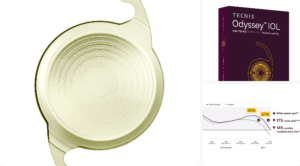👁️ Blade-Free, Safe, and Precise: Femtosecond Laser-Assisted Cataract Surgery
Cataract is one of the most common causes of vision loss worldwide. This condition, which occurs when the eye’s natural lens loses its transparency and becomes cloudy, severely reduces the quality of daily life. Fortunately, thanks to advancements in medical technology, cataract treatment has become a much more precise, safe, and personalized experience. The most significant step in this modernization is Femtosecond Laser-Assisted Cataract Surgery (FLACS).
What is Femtosecond Laser-Assisted Cataract Surgery (FLACS)?
Femtosecond Laser-Assisted Cataract Surgery is a method where some critical stages of the cataract operation are performed without using a blade but with a computer-controlled, state-of-the-art laser. This method maximizes the precision and predictability of the traditional phacoemulsification (ultrasound energy) technique. It is often referred to in common parlance as “blade-free cataract surgery.”
The Key Difference Between FLACS and the Traditional Method
In traditional cataract surgery (phaco), the surgeon manually creates the entry incisions and the capsule opening (capsulorhexis) using specialized blades and surgical instruments. In FLACS, these vital steps are performed with a Femtosecond Laser with precision down to a thousandth of a millimeter.
✨ What are the Advantages of Femtosecond Laser Technology?
The most important benefits that femtosecond laser use adds to surgical success and patient comfort are:
- 1. Perfect Capsulorhexis (Lens Capsule Opening):
- The laser creates the anterior capsule opening (capsulotomy), where the intraocular lens will be placed, in a perfectly circular shape and at the desired diameter. This ensures the artificial lens (IOL) is positioned more centrally and stably in the eye. Central positioning is critically important for high visual quality, especially with Trifocal/Multifocal (Smart) Lens implantation.
- 2. Blade-Free and Precise Entry Incisions:
- Since the corneal entry incisions are made with the laser, they have a smoother and self-sealing structure. This reduces the risk of infection and speeds up healing.
- 3. Less Ultrasound Energy:
- The laser breaks the cataractous lens into small, soft pieces (fragmentation) inside the eye. As a result, the amount of ultrasound (phaco) energy used to remove the lens in the traditional method is significantly reduced. Less energy usage decreases the risk of trauma and edema in the cornea and other eye tissues, which means faster recovery.
- 4. Possibility of Astigmatism Correction:
- The laser can simultaneously make precise arc-shaped incisions (Limbal Relaxing Incisions – LRIs) in the cornea to reduce or correct astigmatism. This improves spectacle-free vision success after surgery.














